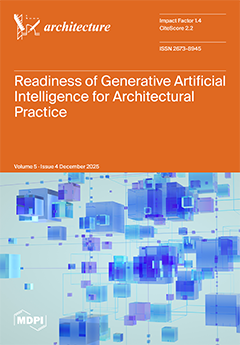Open AccessArticle
Inclusive Mediterranean Torrent Cityscapes? A Case Study of Design for Just Resilience Against Droughts and Floods in Volos, Greece
by
Efthymia Dimitrakopoulou, Eliki Athanasia Diamantouli, Monika Themou, Antonios Petras, Thalia Marou, Yorgis Noukakis, Sophia Vyzoviti, Lambros Kissas, Sofia Papamargariti, Romanos Ioannidis, Penelope c Papailias and Aspassia Kouzoupi
Viewed by 464
Abstract
The complex relationship between urban torrents and riparian communities is investigated in this research, from a landscape point of view, in the aftermath of the catastrophic floods in Volos, Greece, in September 2023. The study starts with a multi-scalar approach, investigating through plural
[...] Read more.
The complex relationship between urban torrents and riparian communities is investigated in this research, from a landscape point of view, in the aftermath of the catastrophic floods in Volos, Greece, in September 2023. The study starts with a multi-scalar approach, investigating through plural timescales and space-scales the way communities and torrents have co-existed in the Mediterranean; particularly in Volos, the way neoteric urban infrastructures have affected and underestimated torrentscapes, is observed critically. This investigation extends to the legislative spatial planning framework in Greece and the EU, concerning the torrent-beds and torrentscapes, in the framework of extreme climate events brought about by climate change. Highlighting the dual challenges of floods and droughts, the research uncovers the inadequacy of existing gray infrastructure and of top-down management approaches, in addressing flood risk. Co-vulnerability emerges as a binding agent, between riparian communities and torrent ecosystems. By the means of research-by/through-design in synergy with anthropological research tools, this approach aims at fostering “just” resilience, by presupposing social justice, towards the promotion of Integrated - Catchment- Management- Plans -(ICMPs) that combine the mitigation of flood risk and extreme drought challenges, the enhancement of torrentscape ecosystems, and the strengthening of the symbiotic relationship between the city inhabitants and its torrents.
Full article
►▼
Show Figures





